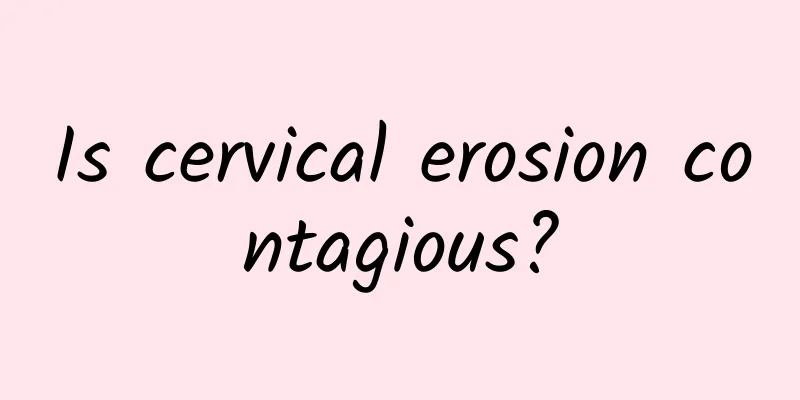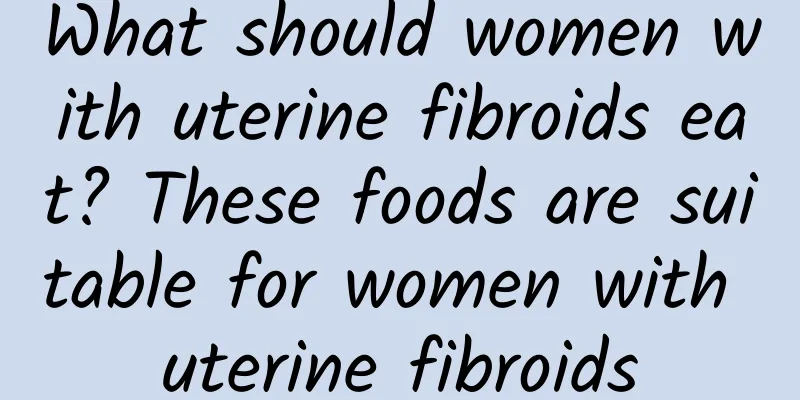Experts explain the dietary treatment of dysmenorrhea

|
A reasonable diet is very important for patients with dysmenorrhea, which can help them effectively control the condition. What are the common dietary treatments for dysmenorrhea ? Here are some common dietary treatments for dysmenorrhea. Generally, common dietary treatments for dysmenorrhea include: 1. Eat a balanced diet Although a healthy diet cannot eliminate menstrual cramps, it can have a miraculous effect on improving overall health. Avoid overly sweet or salty junk food, which can cause bloating and slow movement. Eat more vegetables, fruits, chicken, and fish, and eat small, frequent meals. 2. Supplement minerals It is a common dietary treatment for dysmenorrhea. Calcium, potassium and magnesium minerals can also help relieve menstrual pain. Experts have found that women who take calcium have less menstrual pain than those who do not. Magnesium is also important because it helps the body absorb calcium efficiently. It is advisable to increase the intake of calcium and magnesium before and during menstruation. 3. Avoid caffeine The caffeine in coffee, tea, cola, and chocolate can make you nervous and may cause discomfort during menstruation. Therefore, people with dysmenorrhea should avoid caffeine. In addition, the oils in coffee may also irritate the small intestine. 4. No alcohol If you are prone to swelling during your period, alcohol can make the problem worse. Avoid drinking alcohol during menstrual cramps. If you must drink, limit it to 1-2 glasses of wine. 5. Eat more warm foods It is also an important dietary treatment for dysmenorrhea, such as functional brown sugar. Brown sugar is warm in nature, sweet in taste, and enters the spleen. It has the effects of replenishing qi and blood, strengthening the spleen and warming the stomach, relieving pain, and promoting blood circulation and removing blood stasis. Traditional Chinese medicine believes that women's bodies are mostly congested after childbirth, and the eight meridians are empty, which often causes abdominal pain. For those with partial congestion, doctors often prescribe Shenghua Tang, Shixiao Powder or Jinlingzi Powder, and ask them to take it with brown sugar after the medicine is decocted. The purpose is to use the effect of brown sugar to "clear blood stasis" or "expel lochia" to achieve the purpose of pain relief. The above is an introduction to the common dietary treatment for dysmenorrhea. I believe everyone has some understanding of this. For more questions about the diet for dysmenorrhea, you can consult our online experts, who will give you detailed answers. |
<<: Experts explain the main symptoms of chronic cervicitis
>>: Experts explain how to care for mild cervical erosion
Recommend
What is the difference between menstrual bleeding and functional uterine bleeding?
Menstrual bleeding in a normal menstrual cycle is...
Irregular menstruation often causes harm to women
Since menstrual irregularities are common during ...
The animated film "Inside Out 2" hides the stress and fat! Doctors reveal 5 signs of "stress-induced obesity"
Since the release of the animated film "Insi...
Different types of functional uterine bleeding have different dietary treatment methods
According to the characteristics of age, it can b...
What are the commonly used drugs for threatened abortion?
Many women experience symptoms of threatened abor...
Causes of dysmenorrhea in women due to adenomyosis
As we all know, dysmenorrhea is one of the common...
How many days of pregnancy can I detect an ectopic pregnancy? It can be detected about 40 days after menstruation
As the saying goes, "Women are weak, but str...
Experts explain how to prevent abortion syndrome
The incidence of abortion syndrome is relatively ...
Chronic adnexitis may cause tender masses
Adnexitis can be divided into chronic adnexitis a...
What causes uterine fibroids? How to treat uterine fibroids
Expert introduction: Uterine fibroids are directl...
What are the reasons for being irritable before your period?
One of the reasons for bad temper before menstrua...
What are the triggering factors of Bartholinitis?
Bartholinitis is also a common gynecological dise...
Is abortion anesthesia harmful to the body? Comparison of the degree of harm of the two types of abortion anesthesia
There are two main types of anesthesia for aborti...
Is it normal for the right ovarian cyst to cause less and darker menstrual flow? What are the dangers?
Is it normal for the right ovarian cyst to cause ...
Will women still ovulate after menopause?
Many women are troubled by amenorrhea, and often ...









